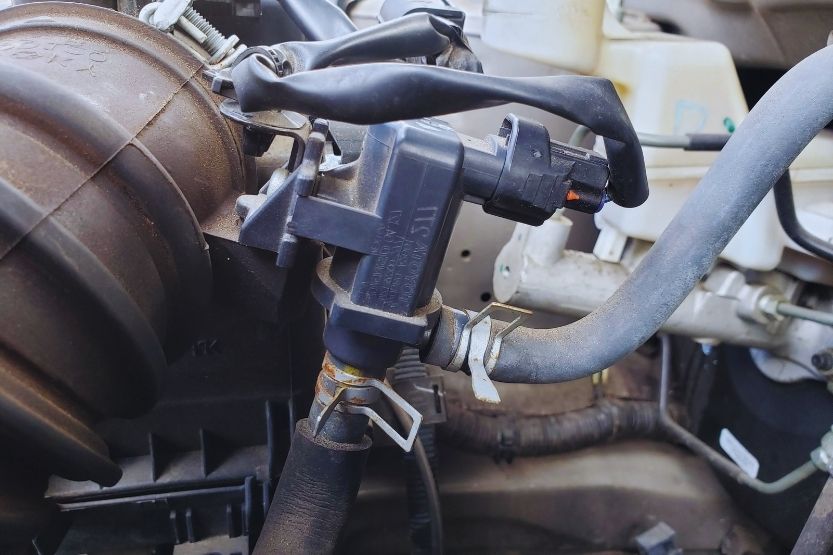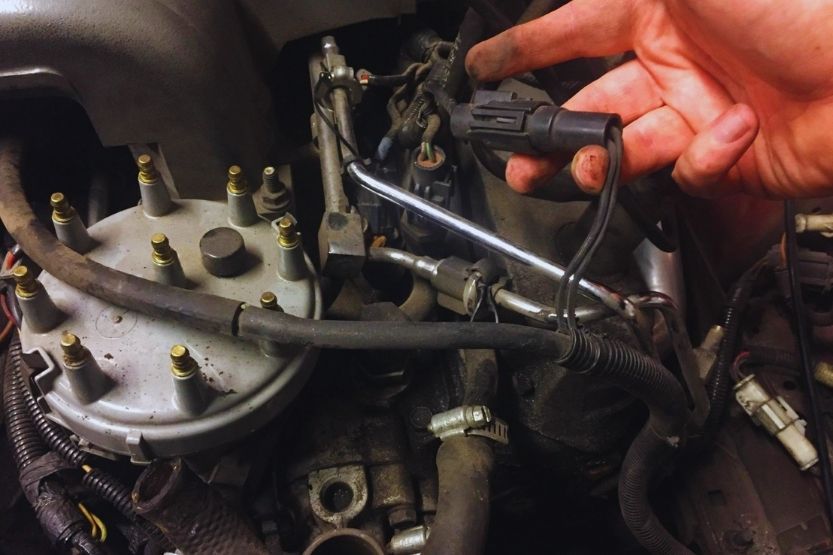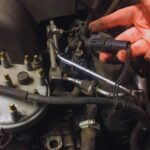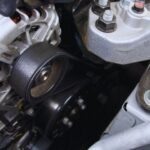The purge valve is a small but crucial component of your vehicle’s emission system. Over time, it is prone to wear and can be a headache to deal with. What happens when driving with a bad purge valve? What are the signs and symptoms that it has problems?
Below are some of the most common signs of a bad purge valve:
- Check engine light turns on
- Rough engine idle
- Difficulty starting the engine
- Poor engine performance
- Failure in emission tests
- Low mileage
Driving with a bad purge valve does not cause immediate harm. Nonetheless, the longer you do not attend to the problem, the more serious the consequences will be. It can result in carbon accumulation and buildup. In turn, your vehicle emits toxic gases.
Read on to determine what happens when driving with a bad purge valve and the signs of a bad purge valve.
Driving with a Bad Purge Valve – What Happens?

In the short term, driving with a bad purge valve does not cause any immediate harm. For instance, if you are in the middle of the highway and notice signs of a failing purge valve, it is not an urgent concern.
You can keep on driving until you reach your destination, and from there, you have the time to fix the issue.
However, if you already know that the purge valve is failing and you keep driving for days or weeks without addressing the issue, the problems will be evident. The biggest risk is a carbon buildup, which results in emissions of toxic gases.
If it has been a long time since the purge valve has sustained damage and failed to fix it, engine misfire is one of the potential consequences. This is because of the excessive accumulation of the vapors in the EVAP canister.
What Is a Purge Valve?
Part of the Evaporative Emission Control (EVAP) System
Also called the canister purge valve, the purge valve is a small component with a critical function. It is a part of the evaporative emission control (EVAP) system.
Prevents Vapors from Escaping
Your fuel tank creates vapors, and the main job of the purge is to prevent the latter from escaping. It ensures that the intake vacuum has the right amount of fuel vapors needed by the engine intake manifold.
Computer-operated Purge Valves
In the case of many modern vehicles, the purge valve works through electrical operation, controlled by the engine’s computer. The valve is closed if the engine is not running.
The computer gradually opens the purge valve when you turn the engine on. Through this, the fuel vapor moves and burns.
Purge Valve’s Location
If you are not car-savvy, it is hard to locate the purge valve because of its size. It is hidden and can be challenging to tell apart from the other components under the hood.
In most cars, you will find the purge valve atop the engine. It usually mounts in front, between the engine and the radiator. The purge valve connects to a circuit.
Signs and Symptoms of a Bad Purge Valve

Watch out for the following problems, which indicate a fault in your vehicle’s purge valve:
1. Check Engine Light Turns On
The Check Engine Light is one of any vehicle’s most important diagnostics tools. It has an intelligent sensor that detects many issues.
As soon as it illuminates, you are warned that something is wrong under the hood. It can be because of several things, and one of the possibilities is that you have a bad purge valve.
Your vehicle’s purge valve connects to the engine’s computer. This computer automatically notices when the valve is purging higher or lower than normal.
When this happens, the check engine light illuminates. You can also see an error code, usually P0441, P0443, P0445, or P0446. These codes are indicative of problems in the EVAP system.
2. Rough Engine Idle
Rough idling is a common engine problem. In many instances, the idling is aggressive, causing your vehicle to shake and bounce.
Such is especially apparent as soon as you turn the engine on. An odd sound can also accompany the idling. The common causes of an engine idle include the following:
- Vacuum leak,
- Dirty fuel injector, and
- A bad purge valve.
When the purge valve breaks, it creates a tiny vacuum leak, which causes the vehicle’s engine to idle. The air that enters the engine may be more than what it needs.
It changes the fuel to air ratio so that the engine will idle. It requires immediate attention. Otherwise, it can create more serious problems triggering an engine breakdown.
3. Difficulty Starting the Engine
At times, you will find it tricky to start the engine, which is another indication that you have a problem with the purge valve. The cause is the vacuum leak. It fails to control the outside air that enters the engine, affecting the ignition. It interferes with internal combustion.
4. Poor Engine Performance
Aside from being difficult to start, the engine can exhibit poor performance once the purge valve goes bad. This is especially true if you are running at high speed.
You will notice that the engine is no longer up to the task. There is also a noticeable decline in power generation, making it difficult to accelerate.
5. Failure in Emission Tests
An emissions test measures pollutant levels, including carbon monoxide and hydrocarbons. It evaluates the environmental impact of your car.
Failing the test will have consequences, depending on the rules of your city or state. A bad purge valve lets toxic gases exit the tailpipe, resulting in dangerous emissions.
6. Low Mileage
A bad purge valve inevitably affects the performance of the engine. As a result, the gas mileage decreases.
The valve may not open, which creates a vacuum leak that makes it difficult for the engine to work. As a result, your car will have a poor mileage, may rough idle, or will have difficulty starting.
Again, can you drive with a bad purge valve? You can drive with a faulty purge valve, but this is not recommended since the risk of your car having a broken EVAP system increases. Driving with a bad purge valve will also cause your car to waste fuel and emit more toxic fumes.
How to Fix a Bad Purge Valve

A faulty purge valve can result in serious problems if you do not address them. When the purge valve goes bad, its casing may crack, which allows the fumes to escape.
Additionally, it can cut or damage the solenoid coil. However, the most common issue is carbon and debris buildup that prevents the purge valve from properly working.
If you are a handyman, you can check and fix the problem yourself. It is an easy DIY task if you have basic tools and follow the steps below:
1. Test the Valve
The first thing you need to do is test the purge valve. In turn, you will know if it is indeed the problem or if you should look at other potential culprits. The specific procedure varies, which depends on the brand and model of your vehicle:
Turn Off the Engine
You will need to touch various components, so make sure everything is cool. Wait up to 30 minutes after switching off the engine before you start.
Locate the Purge Valve
Its small size makes it tricky to pinpoint the exact location. In most cars, you will find it inside the EVAP canister. Consult the manual or research your vehicle’s model online to know where you will find the purge valve.
Perform a Continuity Test
Perform a continuity test to rule out damage to the purge valve: To do this, you will first have to disconnect the valve.
Use a multimeter and choose continuity mode. Listen to the sound. If you hear something, then the valve is working. Meanwhile, the lack of an audible sound is indicative of damage.
Take the Ohm-meter Reading of the Purge Valve
Take the ohm-meter reading of the purge valve: Put the two probes of the multimeter on the purge valve’s power terminals. The typical reading should range from 14 to 30 ohms. If it is higher or lower, it can signify that the purge valve warrants a replacement.
Do the Mechanical Click Test
Connect the probes to a 12-volt battery terminal. Connect the terminal’s other end to the purge valve. If it does not click, the purge valve is broken.
2. Clean the Purge Valve
Cleaning the purge valve is easy to restore its functionality and prevent further problems. This can also be an effective preventive measure:
Spray the Valve Using a Carb Cleaner or Sprayer
Carb cleaner is a liquid cleaner in a tin can with a powerful formula to remove debris in the purge valve. It uses high pressure, eliminating even stubborn dirt.
Pull the Valve and Hold It In Your Hand
Use your fingers to cover the two ends. Shake the valve aggressively, which will remove trapped dirt.
Release the Vapors
The vapor inside the purge valve will turn into liquid in some cases. Left untouched, it will block the valve. Open the end of the valve to release the vapors.
Use a Contact Cleaner
Use a contact cleaner and spray. Wait until it is dry.
If none of these things work, get in touch with a mechanic. A professional will have the tool, knowledge, and experience in cleaning the purge valve.
3. Replace the Purge Valve
In some cases, cleaning the purge valve alone isn’t enough. If it is beyond saving, then you will need a replacement:
Cool the Engine Down
Before you work, cool the engine down. This prevents you from touching any hot surface during the job.
Disconnect the Battery
To trigger the movements of the valve, it connects to a battery.
Find the Purge Valve
The specific location depends on the car that you have. Check the manual if you are unsure of its location. In most cases, you will find the solenoid valve next to the fuel system or on the top of the engine.
Take Off the Electrical Connector
Then, take the vacuum lines out. Mark the line’s exact location, which will prevent you from installing it back once you are done with replacing the purge valve.
Remove the Purge Valve
Remove the purge valve from the firewall or fuel injector rail. Then, install the new purge valve. Follow the guidelines on the instruction manual as indicated by the manufacturer.
Return the components you have earlier detached from the assembly.
Conclusion – Driving With Bad Purge Valve [What Happens? Signs and Symptoms]
The purge valve is a computer-controlled component that keeps the fuel vapors in the tank, preventing their release into the atmosphere. When the purge valve goes bad, it cannot control the vapors so that they will escape. This will increase the toxic emissions of the vehicle.
Below are the most common signs of a bad purge valve:
- Check engine light turns on
- Rough engine idle
- Difficulty starting the engine
- Poor engine performance
- Failure in emissions tests
- Low mileage







![Read more about the article Walmart Auto Center Prices [Full List]](https://roadsumo.com/wp-content/uploads/2022/07/Walmart-Auto-Center-prices-300x200.jpg)
![Read more about the article Nissan Key Fob Battery Replacement – [How to Change It?]](https://roadsumo.com/wp-content/uploads/2022/11/Nissan-key-fob-battery-replacement-300x200.jpg)
![Read more about the article Traction Control Light [What Is It and Why Is It On?]](https://roadsumo.com/wp-content/uploads/2022/03/traction-control-light-300x200.jpg)